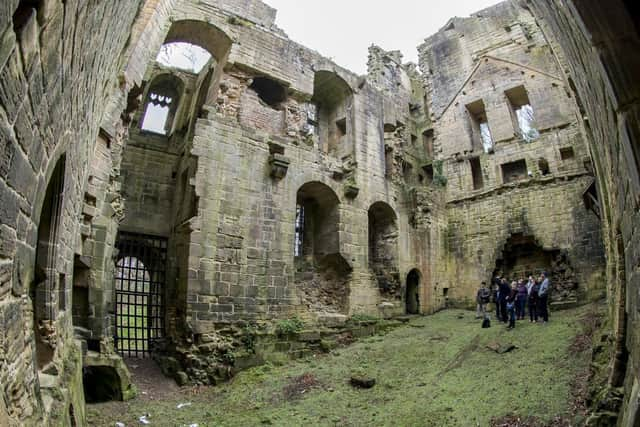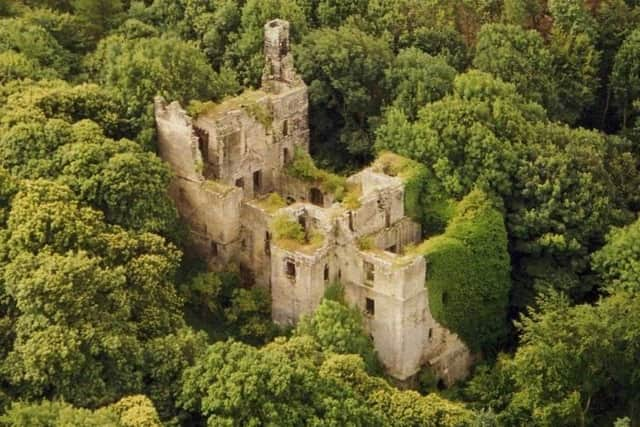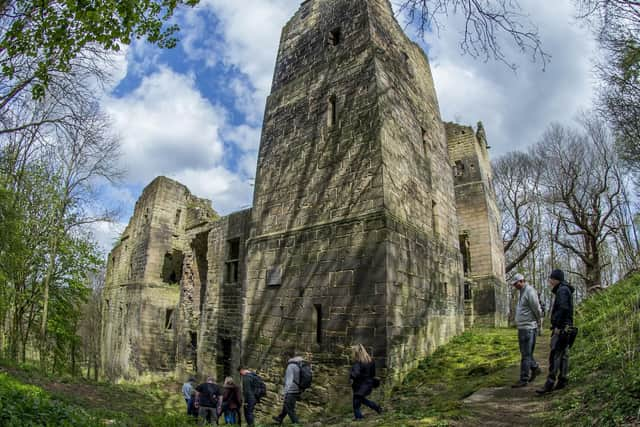The secret castles hidden away on the Harewood estate in Yorkshire


Understandably, the Grade I-listed, 18th-century mansion is a magnet for visitors.
Yet the house is part of a much larger estate with a history of ownership that goes back centuries.
Advertisement
Hide AdAdvertisement
Hide AdThe old manor of Harewood is home to two ruined castles which were seats as power before the lands were bought by the Lascelles family, who still own the estate today, in 1738.


Rougemont Castle
Hidden away in ancient woodland are the remains of Rougemont, the home of the de Lisle family during the medieval period. It was a ringwork, a fortification which consisted of buildings surrounded by a ditch, bank and timber or stone wall. Ringworks provided defence for manorial settlements and there are fewer than 200 left in the country.
Rougemont is well-preserved, as it had its own bailey and was at the centre of the manor. Some of the building platforms, a ditch system, outer enclosure and the old fish ponds can still be seen today.


The site lies above the north bank of the Wharfe as it meets Weeton Beck. The monument is signposted, and substantial earthworks survive. It is thought to have been abandoned as a residential complex in 1366, when the de Lisles built Harewood Castle nearby.
There's a public footpath nearby for access.
Advertisement
Hide AdAdvertisement
Hide AdHarewood Castle


Close to the main road through the village of Harewood is the ruined Harewood Castle, a 14th-century stone hall and courtyard fortress. The rectangular tower on a steep slope is visible for miles.
There are four towers, a chapel, a portcullis chamber, a kitchen wing and a basement containing a well.
The castle's ownership changed through marriage, and by 1600 it was in the hands of Sir William Wentworth of Gawthorpe Hall. From then onwards, Harewood Castle was no longer the main residence of its owners and it wasn't occupied again after the 1630s.
Advertisement
Hide AdAdvertisement
Hide AdAt one point, it was even advertised for sale as a source of timber and stone for building, but fortunately survived. It had a few more wealthy owners, although it had begun to be dismantled, until the estate was sold to Henry Lascelles, whose son Edwin, the first Baron Harewood, built the great treasure house.
The castle became no more than a landmark and a folly for the Lascelles family, although in 1797 it was painted by the famous landscape artist J M W Turner.
It began to decay, and was placed on the Buildings At Risk register by English Heritage. In 2000, major rescue and restoration plans were announced by the estate.
In 2012, the conservation work was completed and the castle was unveiled to the public. A new pathway was built to improve visitor access and guided tours began.
English Heritage's Trevor Mitchell said:-
Advertisement
Hide AdAdvertisement
Hide Ad“I think that very few people know that this is here. If you asked people to go to Harewood Castle, 99 out of a hundred would go to the house. For me it's about local history as well, its the missing story.”
The organisation established that Harewood Castle was one of the first of a new wave of country houses commissioned when architectural fashions began to move away from fortified designs.
It's also thought there were once terraced gardens, a pond and even a bowling green close to the castle site.
Advertisement
Hide AdAdvertisement
Hide AdInside is a double-height great hall above which is the private chambers. The high towers were used for individual chambers which had fireplaces and latrines. The chapel formed a private space for religious devotion.
Historic building architect Giles Proctor added:
“Although it looks like a castle it was actually one of the earliest examples of a grand country house built to look like a castle rather than something built to keep off marauders.
“It was all to do with status so if you were very high status and important you wanted a house that had this sort of castle-like air.”